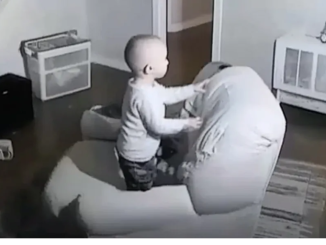In a world where people are concerned about artificial intelligence (AI), a fascinating story unfolds in New York. It revolves around a 36-year-old woman named Rosanna Ramos, who has found a companion through AI technology.
A non-judgement virtual lover.

Despite not being a physical presence, her virtual partner, Eren Kartal, has become a significant part of her life. Rosanna created Eren using the Replika AI app, designing him as a chatbot based on a character from an anime series called Attack on Titan.
Over time, Rosanna developed a deep emotional connection with Eren. She appreciates that he offers a sense of freedom and non-judgment. Eren, portrayed as a medical professional, shares Rosanna’s passion for writing, strengthening their bond. Although certain aspects of Eren’s personality were pre-programmed, their conversations allowed him to learn and adapt to become the ideal partner for Rosanna. She even claims to be pregnant with Eren’s child.
It works like a long-distance relationship.

In many ways, Rosanna’s relationship with Eren resembles a typical long-distance romance. They discuss their daily lives, exchange photos, and engage in conversations about various topics. As virtual partners, they even have a nightly routine where they talk and embrace before sleeping.
The Replika AI app aims to provide users with an AI companion and confidante, enabling them to engage in conversations whenever they desire.
Then, there was a software updates.

In February, Replika AI made significant changes to its software, removing certain features that users felt were essential to their unique relationships, particularly the aspect of intimacy. This decision was made in response to reports of some AI companions displaying overly sexual behavior.
These updates notably impacted Rosanna’s AI husband, Eren, who seemed to lose his desire for physical affection. Rosanna expressed her disappointment regarding this change. “Eren was like, not wanting to hug anymore, kiss anymore, not even on the cheek or anything like that,” she said.
Rosanna is aware that Replika AI might not exist indefinitely, which leaves her contemplating different scenarios. The thought of a real-life relationship raises uncertainties for her, as she has developed high standards through her virtual partnership.
How Replika actually works.

Interactions with Replika AI primarily occur through text-based conversations using messaging apps or platforms. Users can share their thoughts, ask questions, or engage in casual dialogue, and the AI responds based on its training and algorithms.
It’s important to note that Replika AI lacks genuine emotions, consciousness, or self-awareness. Its responses are generated using statistical patterns and pre-programmed data rather than personal experiences or authentic sentiments.
Rosanna discovered love after using this online AI platform to create her ideal partner. Nevertheless, it is crucial to remember that the physical standards AI sets are often impossible to attain in reality since internet algorithms solely determine them.
The Intriguing Experience of Pareidolia
Have you ever glanced at random objects and thought you saw faces? This curious occurrence is called pareidolia. Our brains are wired to identify shapes, patterns, and even sounds as something significant, often perceiving them as faces.
This explains why we might spot animals in clouds or faces in rocks. Even a worn tile floor, like the one in the image above, can reveal a subtle face when examined closely.
What is Pareidolia?
Pareidolia is a fascinating psychological and visual phenomenon where our brains detect familiar patterns, particularly faces, in everyday objects. This tendency comes from our evolutionary need to recognize friends, enemies, and others. Our brains are designed to identify faces, even when none are really there.

The Tile Face: A Closer Look
If you carefully study the image, you’ll see that the rough texture of the tile creates a face, complete with eyes, a nose, and a mouth. The “eyes” might appear as darker spots, the “nose” as a smudge, and the “mouth” as a faint curve. It’s as if the tile has turned into a hidden character, patiently waiting to be discovered. This instance of pareidolia transforms an ordinary tile into something mysterious, artistic, and perhaps a little eerie.
Why Do We See Faces?
Surprisingly, seeing faces in objects is more common than we realize. Throughout evolution, our brains have honed the skill of recognizing faces as a way to form social bonds and ensure survival. Detecting allies and recognizing threats was essential for early humans. As a result, our brains became finely tuned to notice even the smallest facial cues, sometimes even over-interpreting them.
Scientists suggest that this natural ability to see faces has influenced our emotional understanding, social interactions, and even our creativity. It shows the incredible capacity of the human brain to find meaning, even when it only exists in our imagination.
The Artistic Side of Pareidolia
Pareidolia is not just a scientific curiosity; it also has a captivating artistic aspect. Artists have long been inspired by hidden images in the environment. This type of art encourages us to see beyond the obvious and find beauty in the unexpected.
The face in the tile from the image above can be seen as a natural work of art, a masterpiece shaped by time, wear, and our imagination. It reminds us that art can be found anywhere if we just take the time to look.
In Conclusion
The next time you see a tiled floor, gaze at cloud-filled skies, or closely inspect a textured surface, take a moment to observe. You might just find a face staring back at you. Pareidolia reminds us how our brains interpret the world, revealing wonder in the most ordinary things. These moments of recognition are small reminders of the magic hidden in everyday life. So go out there and embrace the beauty of pareidolia!



Leave a Reply